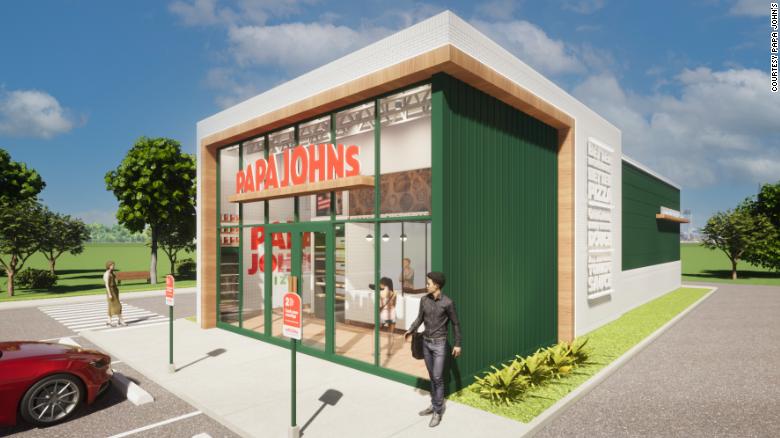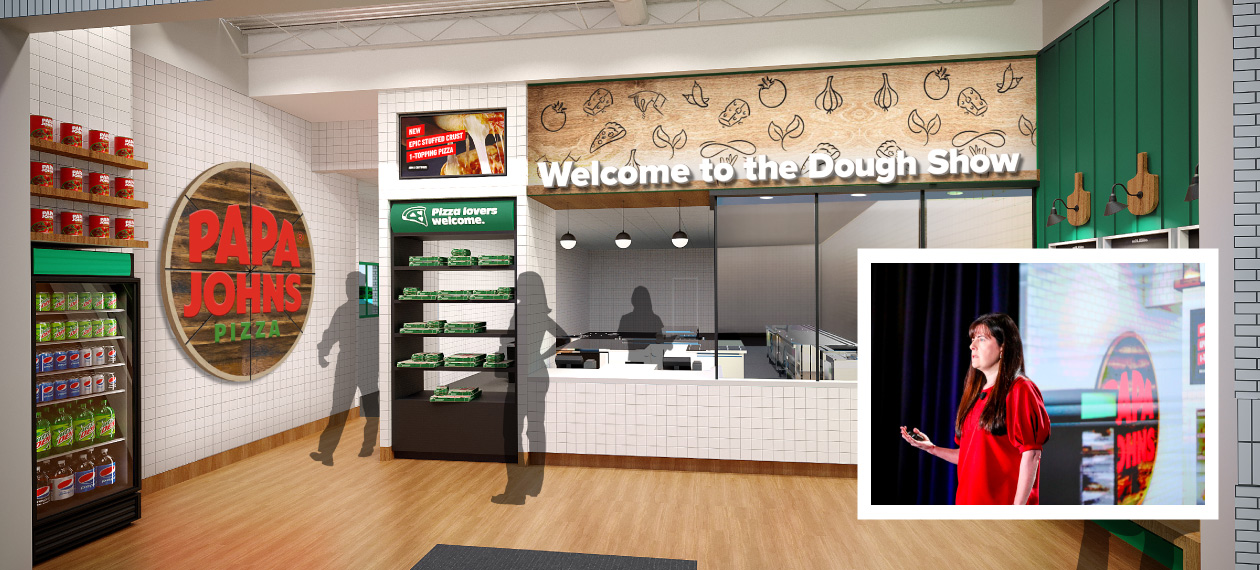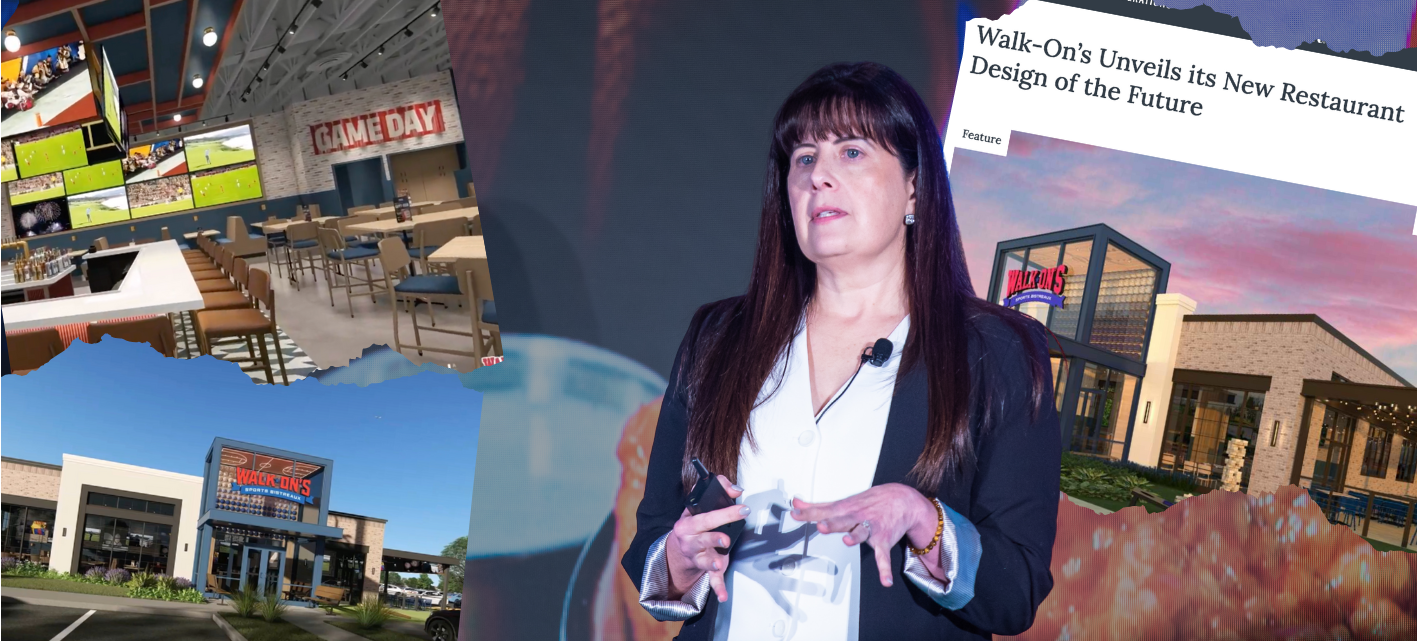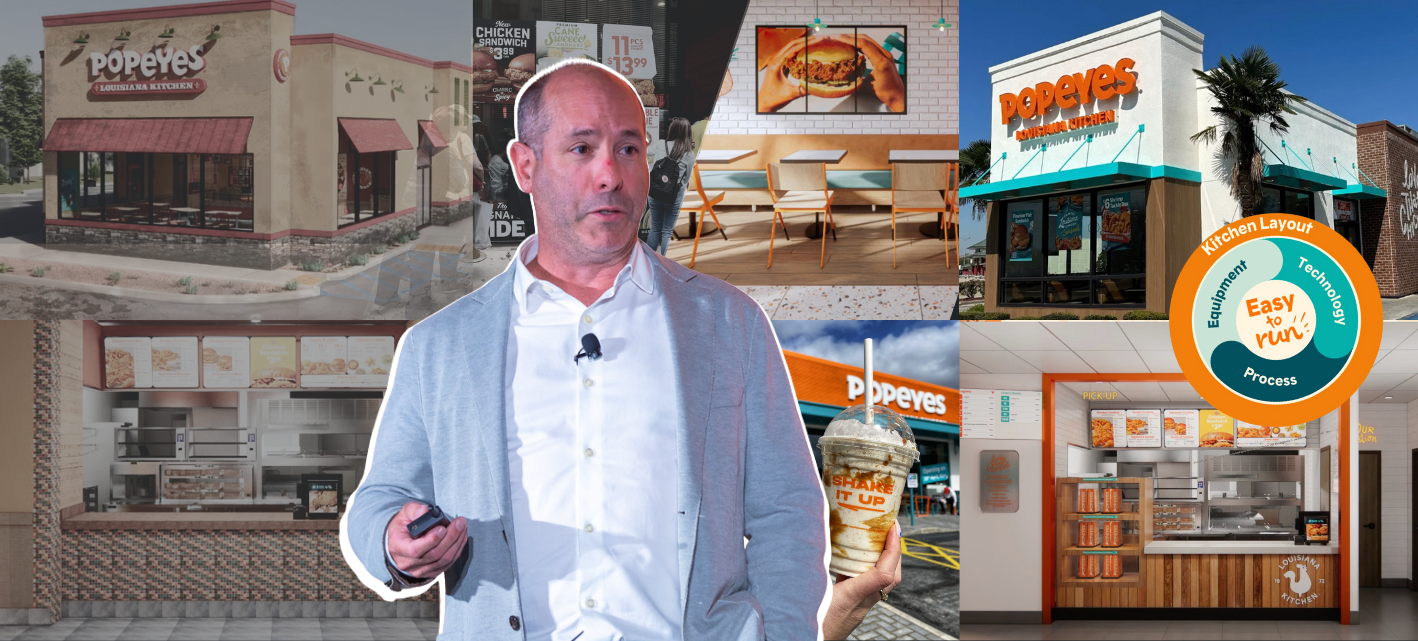According to Jennifer Pecoraro-Striepling, “There’s no magic bullet to remodels.”
And she would know. As VP of Design, Construction & Facilities at Papa Johns, Pecoraro-Striepling is currently rolling out the legacy pizza chain’s brand refresh. Neither is this her first rodeo. Before Papa Johns, she did the same at Outback, Bonefish, Olive Garden, Kohl’s, and more.
Speaking at RestaurantSpaces, Pecoraro-Striepling outlined how she and the team are orchestrating the ambitious undertaking—Papa Johns has never attempted a system-wide remodel rollout before—how they’re overcoming today’s unique development challenges, as well as some best practices she’s learned over the years.
Dealing with the Challenges of Today
Pecoraro-Striepling likened remodeling during the past two years to a game of chutes and ladders: “You start to climb the ladder and get to the top of the board—or complete the project—and then all of a sudden, you’re standing at a chute and you can’t find a widget and you just lost ten weeks on your project schedule.” Such scenarios are far too common, especially today, as restaurant chains currently deal with logistics issues and delays securing materials and equipment, not to mention labor shortages.
Another challenge lies in securing building permits. Many municipalities are still struggling to catch up to a backlog of projects due to the disruption of the pandemic. Additionally, permitting offices have moved many processes online. So instead of interacting with reviewers and inspectors face to face, Pecoraro-Striepling described the frustration of having to upload documents and hoping they make it to the other end.
Creating the Project Scope
When it comes to scoping a remodel project, Pecoraro-Striepling recommends evaluating the numbers first. Look at your lease terms and renewals, find out what the landlord is responsible for, and determine the cost of throwing away items that have not yet totally depreciated. Your finance team will want to know.
Next, consider location. Labor and material costs will vary from place to place, as will permitting difficulty. So understand your project’s location requirements and then educate your executive team on them. Pecoraro-Striepling budgets project scope into three buckets:
- What’s visible to the guest?
- What can help improve team members’ efficiency?
- What will repair and maintenance (R&M) cost?

Budgeting for all three areas will maximize the impact of your remodel. But that doesn’t mean you always need a full remodel. Choose from three scope levels: a complete exterior and interior remodel (high level), an exterior and guest-facing interior remodel (medium level), or an exterior remodel only (low level).
No matter the scope, budget in a 5-15% contingency for surprises and scope creep. If the building is older, for example, you’ll want to factor in more expenses. There will always be unexpected costs, so it’s important to plan for them.
Assembling the Team
One of Pecoraro-Striepling’s favorite quotes comes from hockey coach Herb Brooks: “I’m not looking for the best players; I’m looking for the right ones.” And the same goes for her. She likes having eclectic teams because they help alleviate egos, facilitate collaboration, encourage mutual respect, and keep everyone honest about expectations. After all, remodeling involves a long cast of characters: architect, MEP consultant, structural engineer, design project manager, permit expeditor, purchasing agent, facilities manager, construction manager, general contractor (GC), and more. The key to success is to hold each other accountable.
Loading the Wagon
It’s hard to start a remodel when you’ve been fighting for sales. And it’s even harder now that GCs have enough day work that they don’t need to take on any night work. So to minimize the inevitable downtime from remodeling, you need to “load the wagon” before you start. This means ensuring that you have permits, construction materials, equipment, HVAC, dumpsters, storage space, and FF&E ready to go in a nearby warehouse. That way, you can hit the ground running as soon as remodeling begins. However, “keep in mind, remodels are Pandora’s box. There’s always going to be something you didn’t think of or you didn’t plan for,” Pecoraro-Striepling warned. “So you can load the wagon as much as possible, but it may not alleviate everything.”

A rendering of a new Papa Johns store
Detailed Timelines
Coordinating timelines across the board is crucial. Hold weekly meetings to go over milestone dates, delivery schedules, and potential challenges. Remember that you are the expert. Others may not report to the executive team, but you do. So communicate expectations frequently and never assume what others know. Communication is key.
The same goes for jobsite reports from construction project managers and GCs. They’re important but can also be deceiving: “You’ll get the one picture of the perfect corner and then it’s a disaster over here,” Pecoraro-Striepling said. So set up a standard form of required shots to ensure you get a comprehensive status update. And lastly, don’t be afraid to pick up the phone. Often, it’s easier than email and better at preventing false assumptions.
Lookback and Review
Lastly, it’s important to look back and evaluate your rollout program, especially if it’s a first-time rollout. Ask yourself these questions:
- How did it go?
- What did you learn?
- What requests for information (RFIs) are there?
Pecoraro-Striepling likes to walk through the building with architects, engineers, and operations to do an autopsy market by market. “There’s always something that comes out,” she says. “Just because we put it on paper today, three months from now everything could change … You need to be able to check yourself on a day-to-day basis. It’s not one and done.” Ultimately, “walking through the building and listening to each other is the only way you’re going to learn and push yourself to get better and have a clean-running program.”

Posted by
Chain Restaurants Reimagined.
The Retreat to Reimagine Restaurant Development, Design + Technology.
April 12-14, 2026 | Miami, FL





-3.png)
-4.png)
-3.png)



Comments